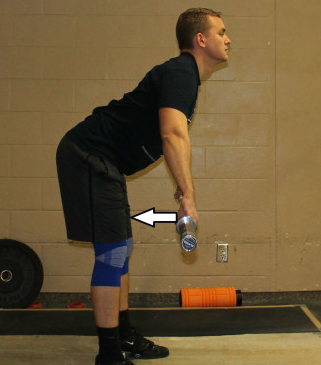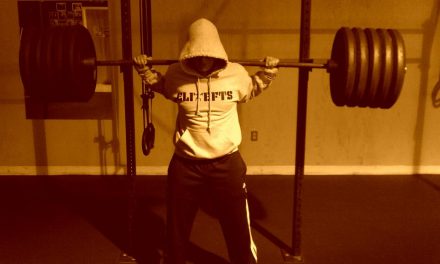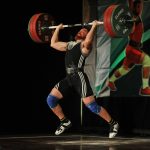by: Adam Sayih
The Latissimus Dorsi, aka the “lats,” aka your “wings” is a highly involved muscle in the weightlifting movements, however, using this muscle is rarely coached. The clean and the snatch both involve the barbell to be placed in front of the shins, already putting us in a biomechanical disadvantage since we’ll be pulled forward as a result. If you’ve ever done a hex-bar deadlift, you know you can do a significantly more amount of weight than a conventional deadlift. The handles are usually higher but the fact that the weight is centered on you gives you a big mechanical advantage to move serious weight. Since the barbell is in front of us during the lifts, pulling technique is crucial to maximize weight, speed, balance, and position.
During the first pull of either the clean or the snatch, there needs to be a balance shift from mid-foot to the heel. By the time the barbell reaches the knee, the shoulders need to be over the bar while the weight is on the heels. While these positions are commonly coached, sweeping the bar back is mistakenly left out of instruction. In order for the weight to shift backwards to the heels AND for the shoulders to be over the barbell will require the lats to forcefully “sweep” the back backwards towards the body.
Although physics tells us a straight bar path is the most ideal way to move the most amount of weight possible, it isn’t realistic and using the lats will steer the barbell during the first pull to form the bottom portion of the “slight S” bar path we commonly see in world class lifters. When the lats aren’t involved and the athlete isn’t actively sweeping the bar back, the bar path during the first pull will be completely straight. Although this sounds like a good thing, it’s actually pretty bad.

Left image bar path lacks usage of lats, hence the straight line from the floor. Also, notice how far the hips traveled forward. The point of hip contact is nearly over the toes. In the right image, the lats sweep the bar back during the first pull. The point of contact in the hip is more mid-foot which is more ideal.
As a result, the weight of the bar will be pulling the athlete forward, making the weight shift from mid-foot to heel nearly impossible. The barbell is also getting away from the athlete so at the knee the shoulders will be on top of the barbell rather than over. The final consequence will be result in the barbell being very far (relative) from the lifter so the athlete will have to over reach with the hips and launch the hips forward into the bar rather than meeting the bar at the hips. This will cause the bar to loop forward causing the lifter to jump forward as well.
The easiest way to tell if you’re using your lats is to identify the barbell and shoulders in two positions. In the set-up, note the barbell position, then note the position at the knee. If the barbell didn’t shift back or the shoulders aren’t over the barbell, then the barbell isn’t being swept back with the lats enough. You can also use bar path apps (Iron Path for example) to note the path during the first pull. If the bar path is straight up and down, the lats aren’t being used.
A simple drill I like to coach for those who have this issue is simply bringing the bar back and forth to the hips with straight arms. You’ll lean forward slightly so if you relax, the barbell dangles freely under the shoulders. This shows the athlete how the barbell behaves when the lats aren’t involved. From there, with straight arms, sweep the bar into the hips using just the lats. This drill is excellent and really demonstrates the importance of the lats and how to sweep the barbell during the weightlifting movements.
Use those lats! Feel free to leave a comment if there’s any confusion.
Cheers,
Stay connected!
Here’s how to follow us:
Instagram: @GentlemanAndMeathead
Facebook: Facebook.com/GentlemanAndMeathead
Twitter: @ClassyMeathead












